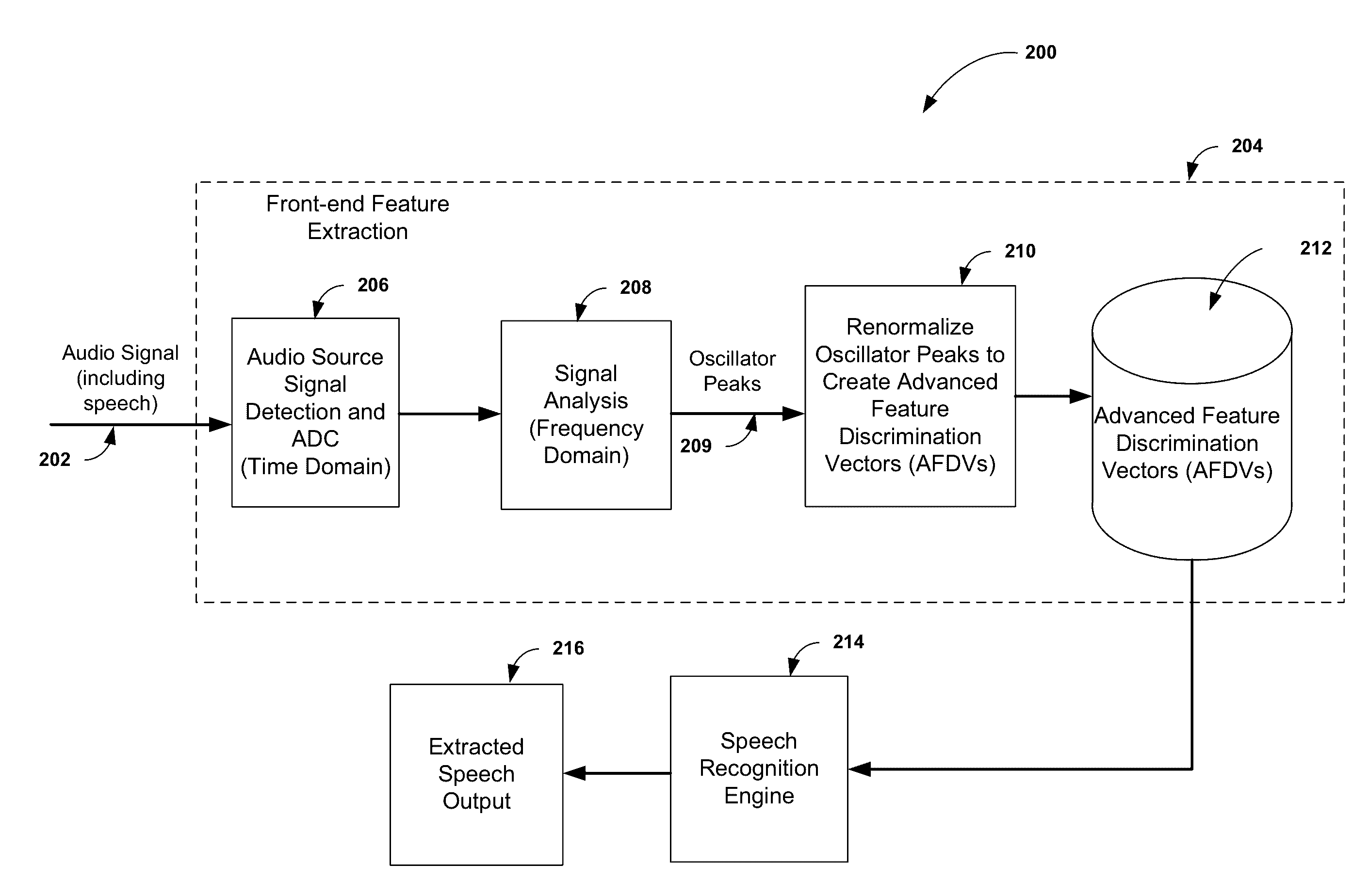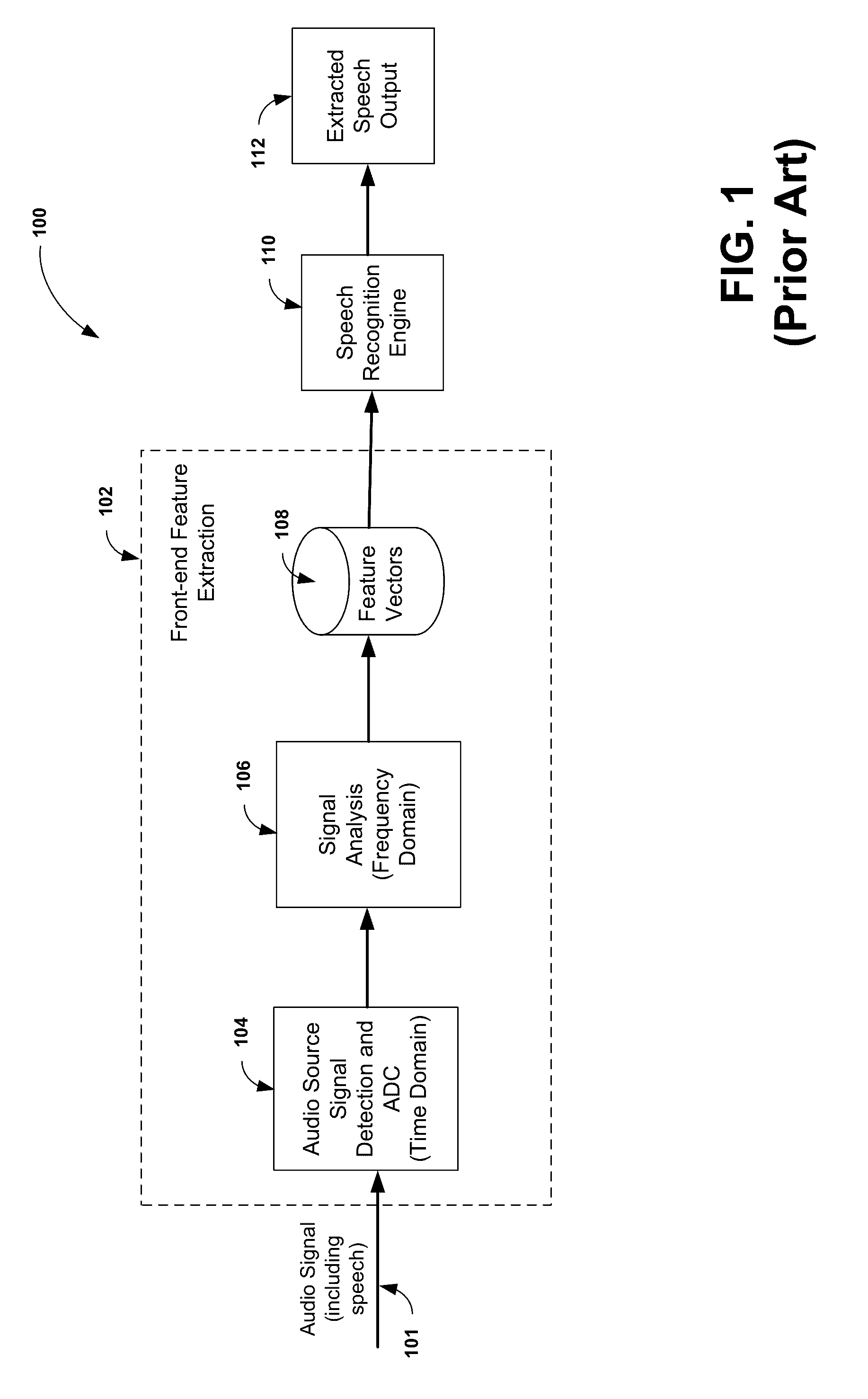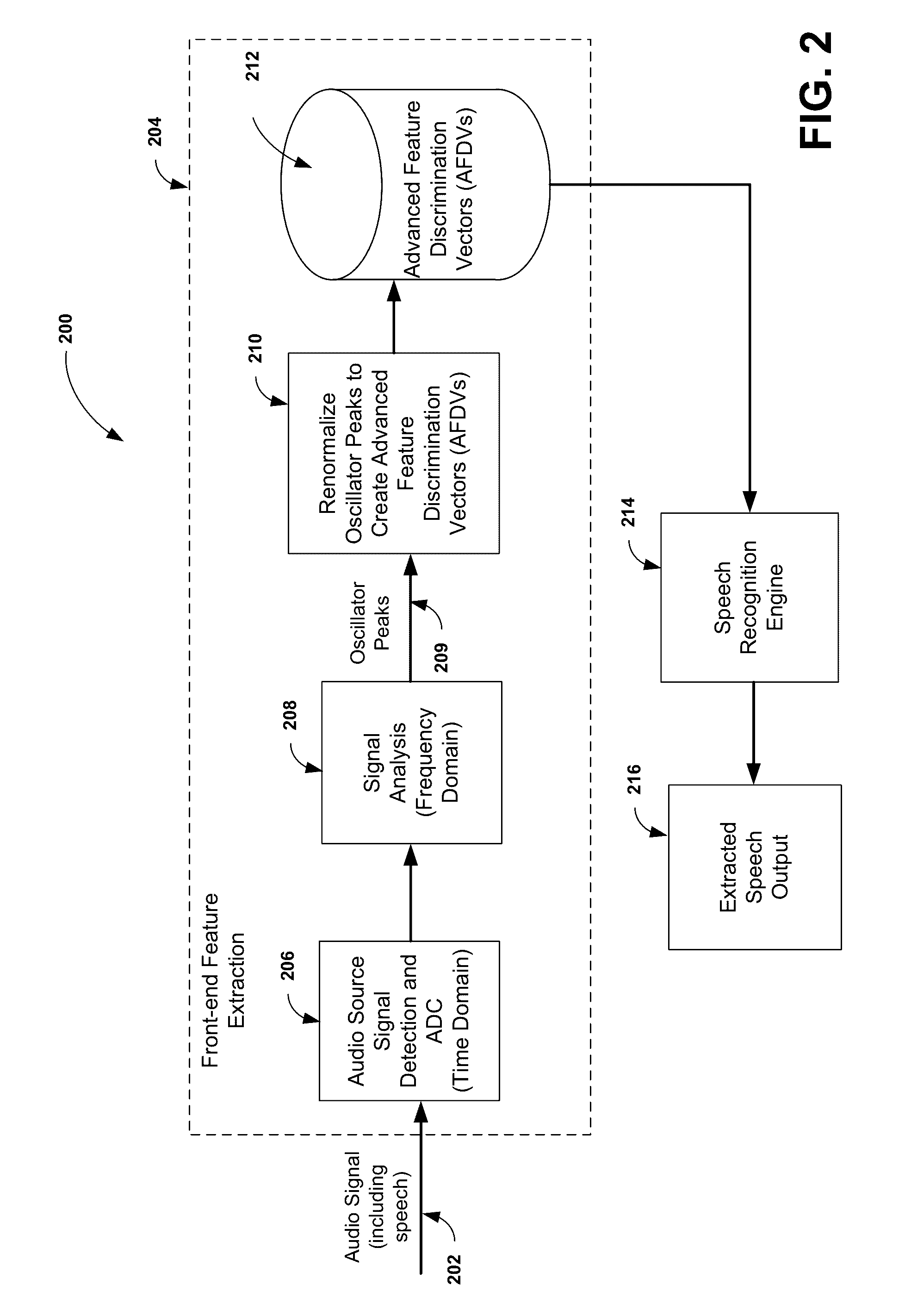Method and system for generating advanced feature discrimination vectors for use in speech recognition
a speech recognition and feature discrimination technology, applied in speech recognition, speech analysis, instruments, etc., can solve the problems of difficult computer programming, inability to do what we humans take for granted, and inability to accurately generalize speech recognition, so as to achieve accurate prediction of phonemes, wide variation in speaker characteristics, and effective feature information
- Summary
- Abstract
- Description
- Claims
- Application Information
AI Technical Summary
Benefits of technology
Problems solved by technology
Method used
Image
Examples
Embodiment Construction
[0047]A method of renormalizing high-resolution oscillator peaks, extracted from windowed samples of an audio signal, is disclosed that is able to generate feature vectors for which variations in both fundamental frequency and time duration of speech are eliminated. This renormalization process enables the feature vectors of the invention, referred to herein as advanced feature discrimination vectors (AFDVs), that may be aligned within a common coordinate space, free of those variations in frequency and time duration that occurs between speakers and even over speech by a single speaker, to facilitate a simple and accurate determination of matches between those AFDVs generated from a sample of the audio signal and AFDVs generated for known speech at the phoneme and sub-phoneme level.
[0048]This renormalization method of the invention can be applied to harmonic groupings of oscillator peaks that are characteristic of voiced sounds, as well as to oscillator peaks that are non-harmonical...
PUM
 Login to view more
Login to view more Abstract
Description
Claims
Application Information
 Login to view more
Login to view more - R&D Engineer
- R&D Manager
- IP Professional
- Industry Leading Data Capabilities
- Powerful AI technology
- Patent DNA Extraction
Browse by: Latest US Patents, China's latest patents, Technical Efficacy Thesaurus, Application Domain, Technology Topic.
© 2024 PatSnap. All rights reserved.Legal|Privacy policy|Modern Slavery Act Transparency Statement|Sitemap



